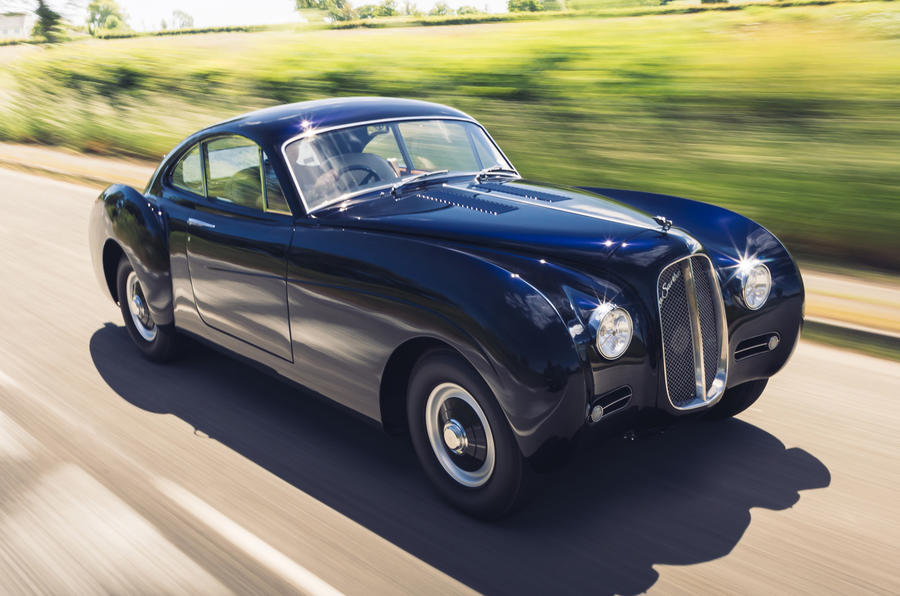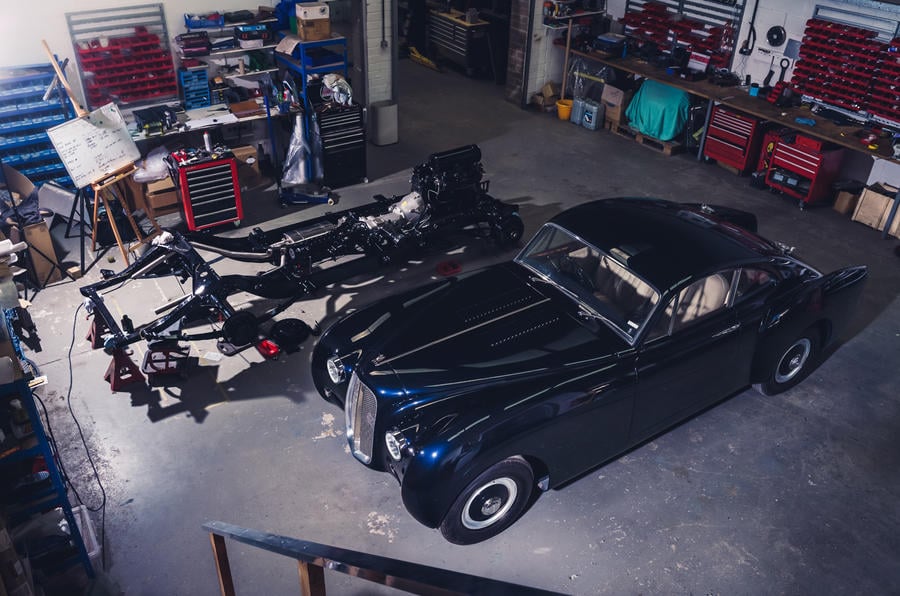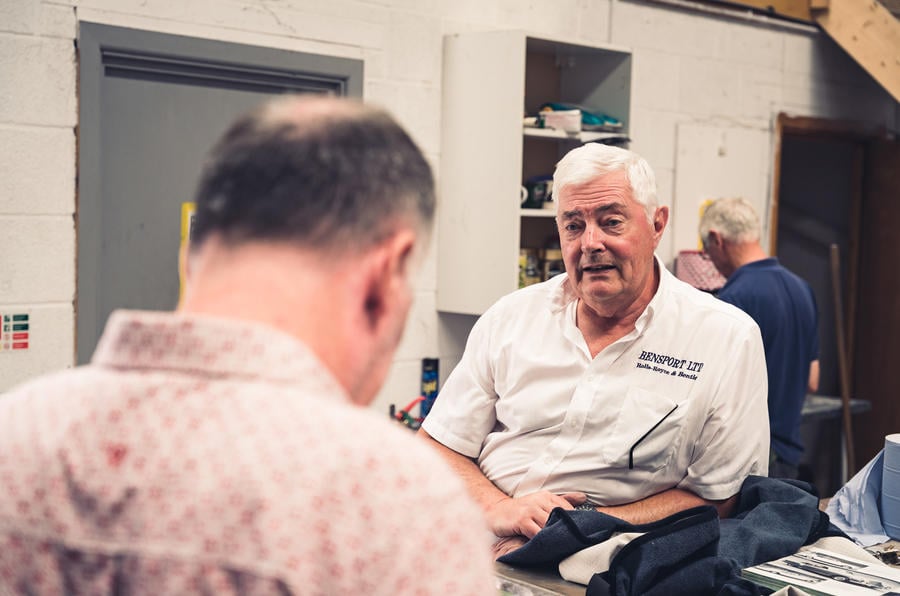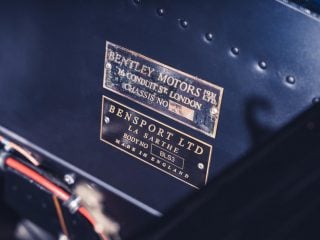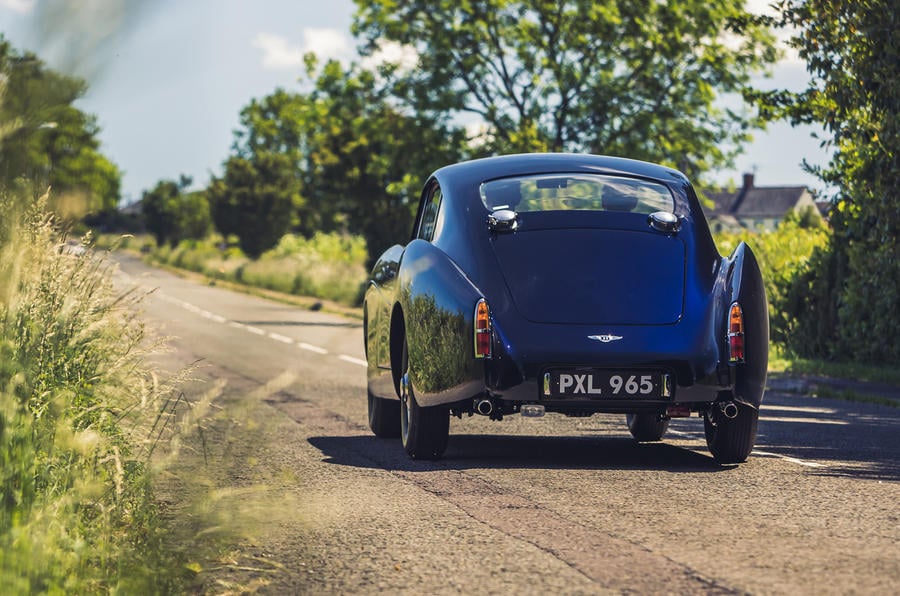Bentley could have won Le Mans if it had used the 1952 R-Type to make a racer, believed Bob Perry, so he did the job himself…
You won’t find a La Sarthe in any Bentley dealer’s stocklist, much less in the history of the company. However, my hunch is that, one day, examples of this stunning vision of what a Bentley Le Mans racer of the early 1950s might have looked like will find their way into the world’s exclusive showrooms and concours events and their story into the history books.
The fact is, although it’s not made by Bentley, the La Sarthe actually is a Bentley and is recognised as such by the car maker. This is because each one is built around the original chassis, engine, gearbox and mechanicals of a Bentley R-Type saloon, the large-booted model that Crewe produced between 1952 and 1955, supplying it to the public with a standard steel body or to coachbuilders without.
Many factory-bodied R-Types have survived but, out of respect for the model, only those whose bodies are the most corroded and beyond saving are considered for transformation into a La Sarthe. Given that each La Sarthe costs from almost $1 million, you can assume that only a few factory-bodied R-Types will ever make the cut anyway. The company responsible for the La Sarthe is Bensport, which takes its name from Rolls-Royce’s internal development title for the first new Bentley car under its stewardship. It’s based in workshops in the Somerset village of Ilton, near Ilminster in the UK.
I’ve come to meet its founder, Bob Perry, an energetic 71-year-old who has spent his life working on Rolls-Royces and Bentleys – and around nine years ago had a ‘what if’ moment. “I wondered what, if the company had built one, a Bentley Le Mans race car of the early 1950s would have looked like,” he explains to me.
His question was triggered by the Embiricos, a famous coachbuilt Bentley named after André Embiricos, the wealthy Greek businessman and racing driver who commissioned it in 1938. Based on the Bentley 4¼-litre chassis, it was fitted with a streamlined aluminium coupé body designed by Pourtout of Paris. It looked sensational and from 1949 to 1951 raced at Le Mans with some success.
Inspired by it, Bentley created in 1952 the equally beautiful and streamlined R-Type Continental, a car capable of cruising comfortably at 160kph. The obvious next step might have been for the car maker to spin a streamlined racer off its then new R-Type chassis and contest Le Mans, as it had done so successfully in the 1920s. However, Rolls-Royce, Bentley’s owner, had no interest in racing, so an R-Type never saw a race track.
That was a huge missed opportunity, believes Perry. “The R-Type chassis was miles better than anything Bentley had produced before,” he says. “It was much stiffer and was fitted with independent front suspension. If the company had chosen to race an R-Type car at Le Mans, could it have won? I think it could have, and so, around nine years ago, I sat down and sketched what I thought such a car might have looked like.”
At this point, he flourishes the fruits of that fancy. His penmanship won’t win any prizes, but he had clearly drawn the La Sarthe, named after the region of France in which Le Mans is located, in all its Embiricos-and-Continental-inspired glory. Having conceived the overall look of the car, Perry decided that he would base it on the fully restored chassis and mechanicals of an old R-Type (you can pick one up for around $35,000 in the UK), replacing the factory-supplied saloon body with a lighter, hand-formed aluminium two-seat fastback coupé body. To make it acceptable to modern customers, he would add power steering, air conditioning, electric windows and central locking.
It all sounds so simple – except it wasn’t. Perry, a likeable and talkative chap, spends rather too much time telling me just how difficult it was to find engineers, designers and craftspeople to take his vision from sketch to roadgoing machine. To cut to the chase, by 2012 he had a CAD/CAM digital version and, after many dramas and false starts, by 2014 a prototype that he was able to show at the Techno Classica Essen show in Germany. Come 2017, the company sold its first La Sarthe to a Japanese client who had read about the car and travelled all the way to Bicester Heritage to see it.
Today, Bensport is starting work on its seventh La Sarthe. Now it has taken production in-house, it will, says Perry, have total control over quality and hopes to reduce build times to around six months.
In the workshop is the first convertible. It’s in mid-build but already the car, which has a lower rear end on account of there being no roofline to consider, bears the beginnings of a beautiful wooden deck to the rear of the cockpit.
A pure-electric model, called the La Sarthe E, is planned to follow in around 12 months’ time. Its motor was developed by Advanced Electric Machines, which doesn’t use rare earth materials. The British firm is also working with Bentley itself on a project to develop more sustainable motors.
“We have no coachbuilding experience, only our common sense,” Perry tells me as I admiringly gaze at his latest road-ready La Sarthe. He’s being modest. I’ve never seen such perfect shutlines, such a liquid paint finish or such exquisite detailing. Viewed from any angle, it’s stunning.
In an adjoining workshop, the team responsible toils away happily, English-wheeling aluminium panels and rubbing down weld seams. In another area, a half-finished La Sarthe sits on two perfectly sited steel rails to ensure accurate body alignment.
Elsewhere, an R-Type chassis complete with its original carburettor-fed engine, gearbox, rear differential, suspension (leaf springs at the back, coils at the front), chassis lubrication system and drum brakes rests on jacks, awaiting its new body. The team has stripped down every part to its last bolt before rebuilding it, along the way retempering the leaf springs; fitting a stainless-steel exhaust system, a more efficient, aluminium radiator and a bespoke wiring loom; and tweaking the rear-axle ratio to yield a comfier 130kph cruise.
The straight-six engine is offered in 4.5-litre or 4.9-litre capacities. With the exception of parts such as the radiator, exhaust and comfort features, Perry insists that everything is either standard or a modification available when the cars were new.
By the time you read this, Bensport will have displayed its first La Sarthe at the London Classic Car Show. Exclusive, beautifully built and lovely to behold, it has been a long time coming, but visitors will surely have agreed that Perry’s vision of a Le Mans racer that never was was worth the wait.
John Evans




